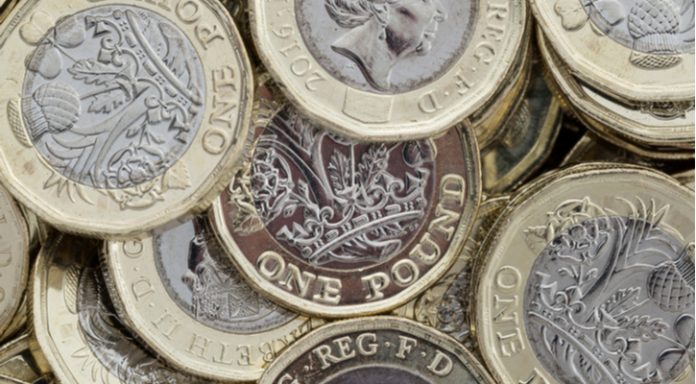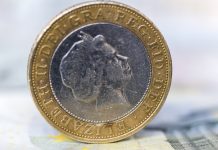Concerns over the political uncertainty in Italy receded on Thursday and Eurozone inflation data impressed, boosting the euro. As a result, the pound euro exchange rate dropped to a low of €1.1374. Despite hitting a high of €1.1495 earlier in the week, the pound euro exchange rate is in line for a weekly decline.
| What do these figures mean? |
|---|
|
When measuring the value of a pair of currencies, one set equals 1 unit and the other shows the current equivalent. As the market moves, the amount will vary from minute to minute. For example, it could be written: 1 GBP = 1.13990 EUR Here, £1 is equivalent to approximately €1.14. This specifically measures the pound’s worth against the euro. If the euro amount increases in this pairing, it’s positive for the pound. Or, if you were looking at it the other way around: 1 EUR = 0.87271 GBP In this example, €1 is equivalent to approximately £0.87. This measures the euro’s worth versus the British pound. If the sterling number gets larger, it’s good news for the euro. |
There has been little high impacting UK data across this week to drive trading in the pound. In the previous session investors digested news that consumer confidence was on the rise in the UK, as it increased by more than what analysts had been expecting. However, the data also showed that the consumers were generally downbeat over the state of the economy. Even as wage growth is increasing and inflation starting to ease, concerns over the wider economy cancelled out improved feelings over personal finances.
Whilst the better than expected data limited the downside to the pound, the overall tone of the consumer confidence report was sufficiently downbeat to not merit a rally from the pound.
Today’s focus will be on UK the manufacturing purchasing managers index. Analysts are expecting Manufacturing growth to have slowed to an 18-month low in May. Should the PMI fall to 53.6 as forecast by analysts it will be the sixth straight month of declining manufacturing activity after hitting a 4 year high in November 2017 of 58.5. Weakness in the sector could pull the pound lower.
| Why does poor economic data drag on a country’s currency? |
|---|
| Slowing economic indicators point to a slowing economy. Weak economies have weaker currencies because institutions look to reduce investments in countries where growth prospects are low and then transfer money to countries with higher growth prospects. These institutions sell out of their investment and the local currency, thus increasing supply of the currency and pushing down the money’s worth. So, when a country or region has poor economic news, the value of the currency tends to fall. |
Italian Coalition Government Agreed & Approved
The euro rebounded in the previous session as concerns of a snap election in Italy evaporated. The two populist parties, the League and 5 Star Movement agreed to form a coalition government, which has been approved by the Italian President, avoiding the need for a destabilising a snap election.
With political risk receding investors were able to focus on strong economic data from the eurozone, which helped lift the common currency. Headline inflation increased to 1.9% year on year in May, stronger that the 1.6% increase forecast by analysts. Meanwhile core inflation which removes more volatile items such as fuel and food picked up from 0.7% in April to 1.1% in May. This was also bigger lift than what analysts had forecast. Eurozone inflation had fallen in April, so investors as well as the European Central Bank were keen to see it pick up again in May.
Inflation in the eurozone has been weak, which has prevented the central bank from considering raising rates. Whilst any interest rate rise is still a long way off, this was as least a move in the right direction.
| Why do raised interest rates boost a currency’s value? |
|---|
| Interest rates are key to understanding exchange rate movements. Those who have large sums of money to invest want the highest return on their investments. Higher interest rate environments tend to offer higher yields. So, if the interest rate or at least the interest rate expectation of a country is relatively higher compared to another, then it attracts more foreign capital investment. Large corporations and investors need local currency to invest. More local currency used then boosts the demand of that currency, pushing the value higher. |
|
This article was initially published on TransferWise.com from the same author. The content at Currency Live is the sole opinion of the authors and in no way reflects the views of TransferWise Inc. |





